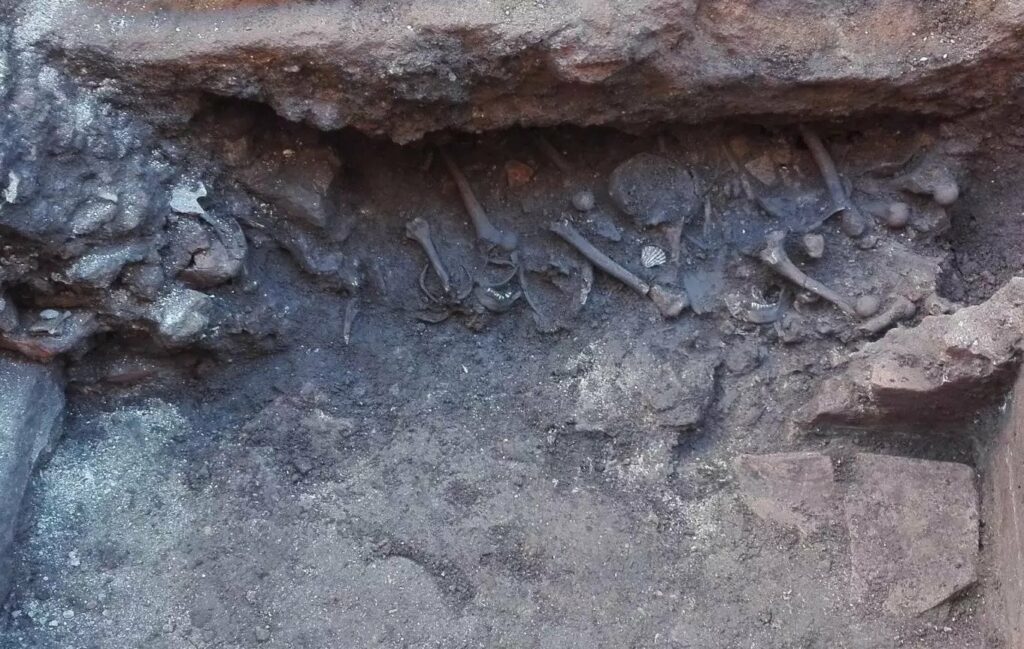Medieval pilgrim tombs found below Rome street
ROME, ITALY—BBC reports that medieval burials were unearthed during utility work on the Via del Governo Vecchio in central Rome.
The graves had been damaged by previous construction projects.
According to Archeological Superintendence the city found two graves dating from the Middle Ages during gas works on Via del Governo Vecchio in the center of Rome, a road near Piazza Navona.
The first tomb, partially destroyed by gas and sewage pipes, contained two human skeletons: one belonging to a woman (25-30 years) with a shell in her hand, and a man (30-40 years).
Besides the female skeleton is a bronze coin dating from the late 11th and 12th centuries, and other fragments of shells.

The second burial site consists of several graves set against a brick wall thought to be associated with the Church of St. Cecilia at Monte Giordano, which was built in A.D. 1123 and demolished in the early seventeenth century.
The second tomb, particularly damaged by modern-day infrastructural works, comprises a cemetery area with dividing sections against a brickwork wall whose graves appear to date to Mediaeval times.
The scallop shells found next to the skeletons contain two holes suggesting their use as necklaces traditionally worn by the pilgrims in the Middle Ages.
These elements lead experts to believe the find was a cemetery for pilgrims, located along the ancient Via Papalis pilgrimage route to St Peter’s.
The burial chambers probably belonged to the medieval Church of S. Cecilia at Monte Giordano, whose origins date back to 1123 but which was demolished in the first half of the 17th century to make space for the Oratorio dei Filippini designed by Francesco Borromini.





